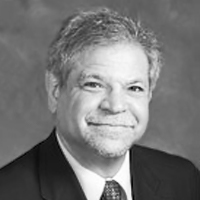Question
When is it appropriate to perform eustachian tube dysfunction testing? How is it performed and how are the results interpreted?
Answer
There are several common abnormalities related to Eustachian Tube (ET)function. Among the most common dysfunctions are obstruction occurring as a result of an anatomic abnormality, local mucosal changes created by otitis media or allergies, patulous Eustachian tubes, or palatal myoclonus. The dysfunction can be transitory, as in the case of negative pressure caused by an upper respiratory infection or, in small children, as a result of poor veli palatini muscle - ET vectors. It also can be a chronic condition as in the case of structural changes from radiation, palatal muscle dysfunction (i.e. from a cleft palate), or from reduced mastoid air cell system. Other often overlooked causes for ET dysfunction
include radiation, stroke, and muscular dystrophy.
The presence of ET dysfunction can be determined subjectively through a history of patient symptoms or objectively by means of direct or indirect measures. In the most basic sense, Eustachian tube function can be assessed with conventional tympanometry. If the tympanogram demonstrates>-250 daPa middle ear pressure ET function is presently abnormal. However,
this result may not indicate chronic dysfunction. However, the absence of negative pressure does not necessarily imply normal ET function. If the tympanogram is normal and if the tympanic membrane is intact, increase the pressure to +400 daPa, have the patient swallow several times or perform a Toynbee (hold nose and swallow) procedure, and redo the tympanogram. If ET function is normal you will see a negative shift in pressure. Then,
pressurize to -400 daPa swallow several times or perform a Valsalva (hold nose and blow) procedure, and redo the tympanogram. If ET function is normal you will see a positive shift in pressure. The total shift in pressure should be at least 15 - 20 daPa. It is important to note that only about 80% of adults (and a lower percentage of children) can properly
perform these procedures. If there is a tympanic membrane perforation or patent ventilating tube, introduce positive (or negative) pressure of approximately 400 daPa. If the ET opens as a direct result of the pressure (i.e. the pressure returns toward 0 daPa) the ET is most likely working properly. If pressure does not equalize, have the patient swallow several times over 20 seconds. If pressure still does not equalize, there is ET dysfunction.
Patients reporting autophony (hearing their own breathing and echo-like vocalizations) may have a patulous ET. This may be caused by significant weight loss, chronic middle ear dysfunction or hormonal imbalance. To test, set equipment to contralateral reflex decay with a non auditory stimulus (or unplug the contralateral earphone). Instruct patient to a)
breathe quietly through the mouth, b) force breathing through the nose, and c) obstruct the nostril contralateral to the probe and force breathing. A patulous ET would produce compliance changes coinciding with inhalations and exhalations.
ET measures may be performed prior to repair of TM perforation, surgical placement or removal of ventilating tubes, when the patient reports serious difficulty equalizing pressure, or if the patient reports symptoms suggesting a patulous ET. Remember that while these measures are not infallible, neither is visual inspection, therefore ET testing
provides a valuable and objective verification mechanism.
BIO
Dr. Robert Sweetow is the Director of Audiology and Clinical Professor in the Dept. of Otolaryngology at the University of California, San Francisco. He received his Ph.D. from Northwestern University in 1977 and also holds a Master of Arts degree from the University of Southern California and a Bachelor of Science degree from the University of Iowa.
Dr. Sweetow has written fourteen textbook chapters and over 80 scientific articles on counseling, tinnitus, and amplification for the hearing impaired published. He is a reviewer for several scientific journals, and the author/editor of Counseling for Hearing Aid Fittings. He is a member of the Board of Directors of the American Academy of Audiology and former co-editor of the AAA Consumer Website.
Jennifer M. Bold is a Clinical Audiologist at the University of California, San Francisco. She received her Bachelor of Science and Master of Science degrees from the University of Arizona. She has been a practicing audiologist for 4 years and currently is working on her Au.D. from the University of Florida.

